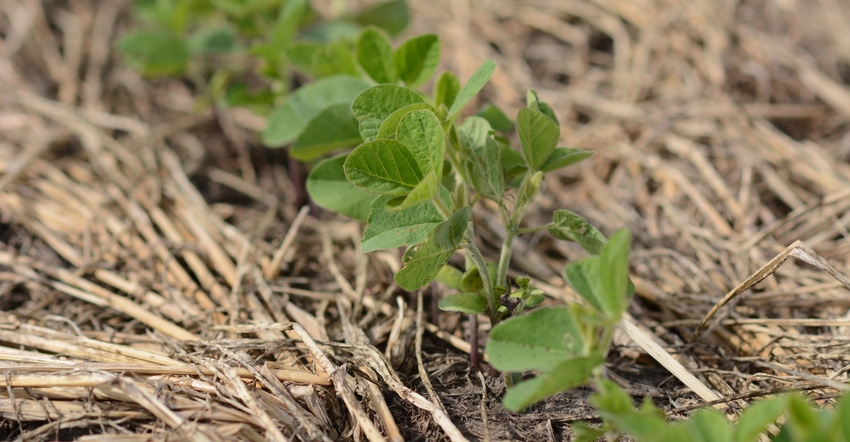
During a visit to Eric Miller’s Piatt County, Ill., farm this past summer, a visitor from Argentina mentioned they refer to cover crops as “service crops.” Now, it’s Miller’s new favorite phrase.
“They provide all kinds of services. We’ve documented significant and consistent nitrate reductions in tile water. That’s our main focus,” says Miller, an active cover crop user since 2011, and a farmer-cooperator assisting with field-scale nutrient loss research projects since 2015. “But additional benefits observed include weed control, erosion control, increased organic material and improved water infiltration.”
He believes cover crops are an asset all farmers should evaluate. To assist producers in developing a cover crop strategy, the Illinois Nutrient Research and Education Council funds nutrient loss reduction projects. NREC released the 2021 Cover Crop Guide in December, echoing with a main message to manage cover crops with a systems approach, or as a component within your complete production system.
Farmers should look at cover crops as more than just an additional input, says Dan Schaefer, Illinois Fertilizer and Chemical Association nutrient stewardship director. “Planting a cover crop in the fall can help with nutrient loss reduction, but focusing on the specific details of how to manage it and still achieve your row crop goals needs to be addressed.”
He adds that the cover crop guide focuses on planting dates, rates, seeding methods and termination options. Often-overlooked items, like previously applied herbicides and their interaction with cover crops, also receive attention. Still, limitations exist.
“When you think about all the specific questions farmers are going to have about using cover crops, you can’t answer all those in a 14-page cover crop guide,” Schaefer says.
Build a service strategy
Where to start? If it all seems overwhelming, start simple. That’s what Miller did in 2011.
“We just did an aerial application of oats in the standing corn. That’s kind of a good first step for people,” Miller says. “There’s no extra time involved to get the crop seeded. It winter-kills, so you don’t have to worry about management. This just gets you used to seeing green stuff in the fall and the entire process.”
From there, your confidence and comfort level can dictate your next steps.
Data gathered from multiple-year, NREC-funded research projects has shown farmers can obtain many of the services provided by cover crops and maintain their cash crop yields when cover crops precede soybeans, Miller says. The focus of the cover crop guide is cereal rye after corn and ahead of soybeans.
But why cereal rye and why plant ahead of soybeans?
“Cereal rye is the king of cover crops,” he says. “And soybeans are survivors that can handle many environments and conditions.”
Plus, Schaefer says it’s easier to no-till soybeans into the combination of cereal rye and the prior year’s corn residue.
Miller gives the example of when you’re harvesting corn and ears are going into the combine.
“That’s the end of the crop season. Now think about the residue being chopped by the corn head and getting distributed out the back of the combine,” he says. “That’s the beginning of the next crop season. When sized and spread uniformly, you create a great environment for not only the establishment of cereal rye, but for subsequent equipment passes like spring planting.”
“This interaction between all field operations is what we mean by ‘systems approach,’” Schaefer concludes.
But what about planting cover crops ahead of corn? Schaefer says current research is focusing on planting winter barley after no-till soybeans and ahead of corn.
In the end, every farm, field and farmer are different. Miller and Schaefer encourage you to review the key elements outlined in the updated cover crop guide. Take a look at the Midwest Cover Crop Decision Tool to choose the best cover crop species for your operation.
And learn from other farmer’s experiences. Talk with farmers who are successfully using cover crops, Miller says. Finally, give an honest self-assessment of your desire to have cover crops provide services for your operation.
About the Author(s)
You May Also Like






